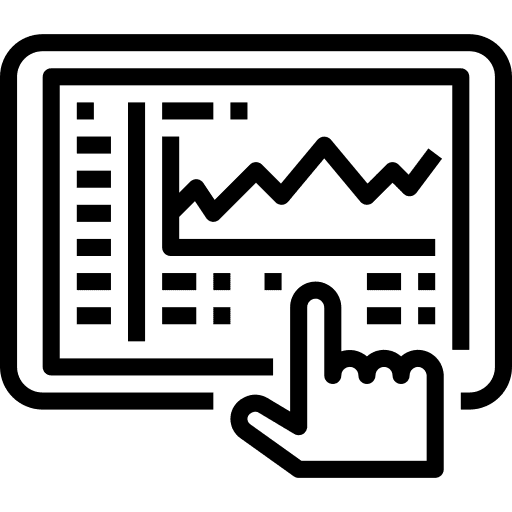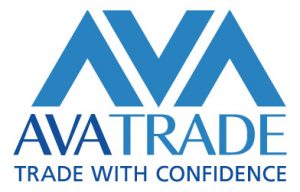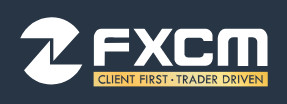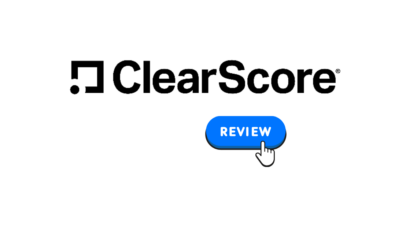Disclosure: Privacy Australia is community-supported. We may earn a commission when you buy a VPN through one of our links. Learn more.
Best CFD Trading Platforms in Australia

With CFDs, traders can speculate on price movements of different kinds of markets, including stocks, commodities, market indices, and even cryptocurrencies.
The best CFD trading platforms come with a variety of features that help you when trading. It’s also important that the platform is regulated by ASIC, the Australian Securities and Investments Commission.
CFD trading is not like other types of trading, which involve the trader owning a portion of an asset. It’s because of this that buying, selling, and trading CFDs can result in profits and/or losses, regardless of fluctuations in price.
The ability to spot trends and speculate about what may happen in the near future is a skill that comes with time, a level that many investors will eventually get to.
Below, I have an in-depth look at all of the best CFD platforms in Australia, tested and researched by us.
Table of Contents:
- How We Choose Our Top CFD Trading Platforms
- Top 9 CFD Trading Platforms in Australia
- Deciding if CFDs are Right for You
- How to Trade CFDs
- Reduce Your Risk
- Rules to Live by When Trading CFDs
- Why Choose CFDs
- Common CFD Risks
- Practice Makes Perfect
- Conclusion
How We Choose Our Top CFD Trading Platforms

We take our search for the best CFD trading platforms seriously, searching for those that meet our criteria.
To narrow down our list to the 9 I chose below, here’s what I looked for:
Market Availability
Who doesn’t like options? I love options, and we’re sure you will too, especially when it comes to choosing how you make your investments. When I look for the best brokers on the market, I want to see variety, including opportunities to buy into gold, Forex, cryptocurrencies, indices, stock, CFDs, and more.
Direct Share CFDs
Some brokers don’t offer CFD trading on shares or add lots of fees in order to access them. I like those which offer direct share CFDs so traders can enjoy access to CFDs without additional charges.
Currencies
If you’re looking to stick to ASX shares, you won’t have to worry. But Forex comes with so many opportunities, which is why I check for currencies. I want to see lots of available payment options and acceptance of currencies from all around the globe to suit every investor.
Commission
When trading, many trading platforms will tack on a commission fee. It’s pretty common, and it’s not a bad thing, as long as it isn’t so high that it takes away from your ability to profit from trades.
Access to Information
Trading CFDs requires careful attention to the market. For that reason, I look for platforms that come with access to real-time data. I take it one step further and try to sift through to find those apps that offer access to data for free instead of tacking on more fees.
Minimum Opening Balance
Some brokers don’t enforce a minimum balance, allowing you to create an account and start trading with any amount you want. I like that, but I also don’t mind small minimum amounts. I like brokers to keep it low, providing access to their platforms for all levels of investors.
Integrations and Software
We cannot emphasise enough the importance of market analysis, which is what you’ll have to do to trade CFDs like a pro. I look for platforms that offer access to advanced tools and integrations, giving you the freedom to analyse the market and get the most accurate look at everything before you trade.
Payment Options
After opening your account you need to transfer funds to and from it, which is why I check out the payment options. While many platforms offer debit and credit cards, I like to find those that also offer other alternative forms of payment, including e-wallets. Popular e-wallets like PayPal and Skrill offer instant deposits and withdrawals, two things you’ll surely want when investing.
Best CFD Trading Platforms in Australia
- Plus500 – Best CFD mobile app in Australia
- Pepperstone – Best for Low-Risk Trading
- AvaTrade – Best Advanced CFD Trading Platform
- FXCM – Best Foreign Currency Integration into CFDs
- Interactive Brokers – Best High Yield CFD Trading Platform
- CMC Markets – Best CFD Broker with Low Fees
- ActivTrades – Best CFD Platform with Lowest Fees
- Trading 212 – CFD Broker with The Easiest Account Opening
- VantageFX – Best Variety for CFD Broker
1. Plus500 – Best CFD mobile app in Australia*
(*Investment Trends 2020)
Plus500 Ltd is based in Israel, founded in 2008, with operating subsidiaries:
The UK – Plus500UK Ltd
Cyprus – Plus500CY Ltd
Australia – Plus500AU Pty Ltd.
The Seychelles – Plus500SEY Ltd
Singapore – Plus500SG Pte Ltd
Estonia – Plus500EE AS
Plus500 is a trading app that focuses on CFDs, meaning that it has a huge selection of things you can do with the trading method.

CFDs are a leveraged product and can result in the loss of your entire balance. Trading CFDs may not be suitable for you. Please consider whether you fall within Plus500’s Target Market Determination available in their Terms and Agreements. Please ensure you fully understand the risks involved.
All of this is complemented by great learning tools and an easy-to-navigate interface. With Plus500 you can jump right into the deep end of CFD trading.
Pros
- No deposit or withdrawal fees
- CFD focus
- Great interface
Cons
- Not very beginner-friendly
2. Pepperstone – Best for Low-Risk Trading
Pepperstone is regulated by several tier-1 regulators including the Financial Conduct Authority (FCA) and the Australian Securities & Investment Commission (ASIC). It does not work like a bank and is not publicly traded. This means it’s one of the safest platforms and is very low risk for all investors.

You can trade with cryptocurrency through CFDs. However, you are not directly able to buy Bitcoin or other cryptocurrencies. CFDs are not available to traders or residents of the UK.
Pepperstone has competitive pricing especially if you have a Razor account and combine it with an Active Trader Program.
You can mobile trade with Pepperstone in many different ways. One of the ways many people use it via third-party apps like the MetaTrader suite of mobile apps. You can get them from the Google Play Store or the Apple Store. They offer a variety of different third-party platforms and apps you can use to access Pepperstone.
Pepperstone also has research resources both in videos and in writing. It does not have as many as other platforms, but the ones it does have are highly educational and insightful.
Overall, it is not one of the top Forex brokers because it does not have its own app. It is a low-risk trader though that you can access on MetaTrader and cTrader.
Pros
- Low risk for trading forex and CFDs
- Growing selection of markets
- Competitive pricing
Cons
- No interactive courses
- Small range of educational materials
3. AvaTrade – Best Advanced CFD Trading Platform
AvaTrader is a highly social trading app that allows you to participate in markets all over the world.
The breadth of options it offers you can be dizzying at times, but it is the perfect place to go when you do not want your handheld.

Too many trading apps are flash-in-the-pan attempts to grab the attention of retail investors. AvaTrade specialises in offering highly customisable trades that allow you to communicate with your buyer/seller.
That is not always an option with online trading platforms. But with AvaTrade, you can use this feature to not only negotiate better but to establish trust. By establishing trust, you can have repeated trades that benefit both of you. Few trading apps can claim to let their users exercise that freedom.
Use AvaTrade if the idea of negotiating your CFDs appeals to you. It is not always for the faint of heart, but it will always yield you a trade experience that is more nuanced and open to profit than others.
Pros
- No deposit or withdrawal fees
- Tons of communication options
- Great research tools
Cons
- Inactivity fees
- Foreign currency commission fees
4. FXCM – Best Foreign Currency Integration into CFDs
FXCM focuses on foreign currency rather than CFDs, it is true. That is why it has to be relegated to #4 on the list.
But just because its focus is elsewhere, that does not mean that it neglects CFD trades.

In fact, because its focus is on foreign currency you are likely to prefer it over other trading apps if that is your area of expertise. Almost no other app allows for the diversity of trading of that kind.
Foreign currency is naturally receptive to CFD trading since the foreign currency is equally as speculative. On some trading apps, people will show up having been taught to be sceptical about CFDs. There is a sense in some people’s minds that market speculation is somehow less honest than other trades.
However, foreign currency markets are always looking toward the future. Therefore, it is easy to find someone who not only has an opinion about whether or not a currency will sink or swim, but will also have an active investment into this opinion.
That means that not only is it easy to find CFD trades, and not only is it easy to make them, but it is easy to learn about how to spot trends in the shifting market. Foreign currency trading works differently than share trading. As such, the focus of this app can open your eyes to that difference.
Use FXCM if you want to insulate your trades and environment from things aside from foreign currencies. It still allows you to see the whole market, but everyone will know what everyone else is there for.
Pros
- Small, communicative community
- Foreign currency focus
Cons
- Includes no other market tools
- Harder to navigate
5. Interactive Brokers – Best High Yield CFD Trading Platform
If you know anything about CFDs, then you probably know that they are risky. For some people, this is a drawback to participating in a market that is inherently uncertain. But for other people, it is the entire reason they are participating in the market in the first place.

After all, in many cases the riskier a CFD is the more financially rewarding it can be. Interactive Brokers allow you access to the most practical of these risks by allowing you to purchase CFDs in S&P 500 companies, hedge funds, mutual funds, and other high-yield investment bodies that trade CFDs.
Not everyone is going to be entering the marketplace at the same level. Some people are going to have more experience, but others are going to have more money. Interactive Brokers connects you to the markets that reward those higher initial investments, making it the best high-yield CFD platform.
Pros
- Access to groups no one else has
- High-yield investment options
Cons
- High barrier to entry
- Risky investments
6. CMC Markets – Best CFD Broker with Low Fees
CMC Markets has been around since 1989, delivering global CFD and Forex options to its customers. It is regulated by Financial Conduct Authority (FCA) and has a long-standing of providing safe and fair services to investors in Australia.

The fee structure is low, and the platform comes with an easy-to-use design that’s perfect on both PC and mobile devices. While the fees are some of the lowest around, the trading fees tend to fall on the higher side, though it’s one of the only downfalls when using this platform.
The platform features a modern design that’s filled with all the things traders need and then some! Luckily, there is a convenient search bar right at the top to help traders find exactly what they need and facilitate the research and trading process. CMC Markets comes with the possibility to integrate with MT4, an innovative and advanced analytics platform.
The app is user-friendly and accessing research tools and educational resources is a breeze. The one downside is the security, which lacks two-factor authentication. It’s recommended to log in using a safe browser to prevent access to sensitive data.
Traders in Australia want more than just a few options when it comes to their portfolio, which is why available markets are extremely important. CMC Markets offers ASX, CFD, and Forex. Access to all of these markets includes stocks, indices, cryptos, and more within them, giving Australians a chance to diversify their portfolio without having to use multiple platforms.
CMC Markets doesn’t offer support around the clock but, it has extended hours that investors can access when they need to. It has fast response times and options for contact include phone support, live chat, and email. Traders can access agents that speak multiple languages and get a knowledgeable rep to walk them through any issue they run into.
While customer care is limited for CMC Markets, there were no outstanding complaints on the web, and I couldn’t find any instances with unsatisfied customers.
Pros
- Low Forex fees
- Access to advanced research tools and integrations
- Customisable dashboard
- Fast account opening
Cons
- High stock CFD fees
- Lacking additional layers of account security
7. ActivTrades – Best CFD Platform with Lowest Fees
From the low trading fees to the opportunity to access markets across the globe, ActivTrades is considered one of the best platforms on the web. It’s safe and reliable, offering traders all kinds of market orders to set up their trades as they wish and keep their finances from plummeting.

CFDs are complex markets, requiring advanced market knowledge that traders can access directly from the platform via the website or the app.
Creating an account is a breeze. Traders who are interested in creating an account simply have to visit the website and sign up before verifying their identity. Some trading platforms on the web make verification a long and drawn-out process, the opposite of what takes place with ActivTrades. It’s 100% online and will have investors on the platform and ready to trade in little to no time at all.
Market orders are an important part of the trading process, allowing investors to have more control over their trades. An account with ActivTrades comes with basic order types, including:
- Market
- Limit
- Stop
- Trailing Stop
The platform also offers order time limits, which include Good ‘til Cancelled (GTC) and Good ‘til Time (GTT). To make the most out of each order and get the most out of each trade, investors are encouraged to add market orders when they can, reducing the risk and/or loss that they experience from a day trading within an unpredictable market.
To fund their account with ActivTrades, traders can use a number of options, including e-wallets like PayPal and Skrill. Apart from that, funding the account can be done via bank transfer and credit or debit card.
There are no fees for withdrawals, and options are the same as mentioned for deposits. While deposits are instant, some withdrawals are subject to a processing time, which could take up to 3 days. All e-wallets are processed instantly, something to keep in mind when processing a withdrawal.
Pros
- Simple account opening without a complicated process
- No charges for deposit or withdrawal
- Low fees across the board
- Advanced order types
Cons
- Inactivity fee, charged after 6 months
- No available price alerts with the platform
8. Trading 212 – CFD Broker with The Easiest Account Opening
Trading 212 has a phenomenal fee structure that is perfect for frequent traders. There are no fees on trade stocks and EFTs, as well as top Forex and CFDs are available. Additionally, withdrawals are free and there is no fee tacked onto your account for inactivity.

Though it’s fairly new on the list of trading platforms in Australia, it’s received a lot of attention due to its amazing platform as well as its access to in-depth market analysis information.
When you visit Trading 212’s website, signing up is simple and verifying your account takes a max of one day. New traders can set up their accounts online and have the process up and ready to go, making their first deposit and gaining access to the platform and the analysis tools.
To make the process run smoothly, make sure to have your tax information and tax ID handy. Also, be prepared to answer questions about your finances, including your employment status and your experience, if any, with trading.
If you’re not one to sit around and monitor the market all day (you’re not alone!), automation is your best friend. Trading 212 offers options to automate trades and set up notifications for alerts like price drops and important announcements from the stocks that you follow.
The web trading platform is accessible via desktop and mobile with the trading app, available for both Android and iOS. From the dashboard on the app, traders can browse stocks, check the market, and even execute orders and trades, all from the push of a button.
The fees are not the lowest on the web but, for what you get, they make it worth your while. CFD fees start at $4.30 for S&P 500 and can extend up to $18.30 (Apple CFD). Still, most other trades are offered for zero commission.
As far as other fees, Trading 212 doesn’t tack any onto accounts, doing away with deposit, withdrawal, and inactivity fees. For that reason, the platform is great for both investing and trading, as it won’t cost you to hold onto your stocks like it would with other platforms.
Pros
- Lots of market options commission-free
- Low CFD trading fees
- Access to in-depth market analysis tools
- Quick account opening and verification
Cons
- High Forex fees
- Limited for diversification
- Limited access to customer care
9. VantageFX – Best Variety for CFD Broker
VantageFX is a bit more limited than the competition, though it has a lot of other good things to offer that put it on the list. Signup is quick and the process to add funds and withdraw earnings is seamless, with a long list of accepted payment methods to accommodate all types of traders.

The integrations include Meta Trader 4 (MT4), which helps investors take their market analysis up a notch and includes access to automated orders and alerts to buy and trade more efficiently.
Investors and traders of all levels benefit from access to educational materials. VantageFX has a ton of them, including access to a demo account and tutorials.
The demo account gives new account members access to virtual money, which they can use in a simulator to get a feel for how trading really goes. In addition to demos and tutorials, members can access videos with a ton of useful information and even access webinars to interact with the pros.
There is a set of tools to help investors access more useful information, helping them get and stay away from what’s happening in the market at all times. Included along with configurable analysis tools is a feature called ‘Trading Ideas,’ which investors can use to check out tips for stocks and other markets to look out for based on professional analysis.
Members also have the option to add the MT4 platform along with VantageFX, scoring even more automated features and accessing alerts and notifications for price drops and more.
The last thing traders want is limited payment options, making it hassle-free to get their hands on the money they’ve earned.
VantageFX offers traditional payment methods like debit and credit cards, along with others like PayPal, Skrill, Neteller, and even cryptocurrencies. There are no fees for either adding or withdrawing funds and, in the case of e-wallets, processing times are instant.
Deciding if CFDs are Right for You
Now that you know what some of the best platforms look like, you might be left wondering if CFD trading is for you. Before looking into how to trade CFDs, find out if they are the right choice for you. CFDs are best for:
- Experienced traders
- Investors with a strong understanding of the market and its fluctuations
- Investors who have a bit of legal expertise and can understand the complexity of CFDs
- Traders not interested in owning assets
- Investors who know how to research
- Investors who understand the risk and how to minimise their probability
How to Trade CFDs
If you made it here, you must be ready to take the plunge.
Getting in on CFD trading comes with a lot of opportunities (there are also significant risks which can not be avoided and there are losses related to trading), which is why several investors are giving it a try.
If you’re one of them, here is how you can start trading CFDs.
Step 1. Choose Your Platform
Before you start trading, you’ll have to have a place to trade, which is why picking your platform is critical. To choose your platform, take a look at our top 9 and think about some of the key features that you want from your trading experience, going with the one that gets the closest.
Make a list of your top choices and be sure to consider your goals, finding a platform that fits your preferred trading style and offers you the features you need.
Step 2. Choose Your Market
With CFDs, you have the option to focus on a market, including shares, Forex, indices, commodities, and much more. Before you trade CFDs, it’s good to know which market you’d like to focus on, and get a better grip on the type of research you need to do.
Step 3. Long or Short?
Before you do anything, you should take a look at the current price of the asset you’re interested in investing in. Take a look at both the bid and the offer, using them as indicators as to whether it’s worth it or not based on the spread.
Then, it’s time to decide whether you want to go long or short. Long investments usually bank on the idea that, over time, the value of the asset will increase. On the contrary, the short term takes the other route and sells the market based on speculation that the value is going to fall.
Step 4. Pick Your Price
With the market and the asset that you would like to trade, now’s the time to get to the more serious stuff. At this time, you’ll need to decide how much of an asset you’d like to trade. Depending on which market you chose, you may have different structures for trading, all of which you should check out and understand beforehand.
One thing to note is that CFD trades go off of leverage, which means your initial investment is much lower than the actual price of the assets you’re trading.
Step 5. Protect Your Investment
A lot of seasoned traders already know about certain protections like stops, stop losses, limit orders, and more. Just like with all other investments, it’s recommended to give your investments a sense of security, adding some key protections through limit orders.
If you’re unsure what these are, take some time to understand them, as they could save your investment.
Reduce Your Risk
Because of the risk imposed on traders who choose CFDs, it’s critical to find ways to reduce risk. There are risks involved with trading, do not underestimate them and the possible losses.
Monitor Your Trade
One of the main reasons why trading platforms with advanced monitoring software is key is because investors can monitor their trade any time day or night.
That comes with a lot of power and can seriously reduce the risk. Be sure to check out the trade and the market as a whole, taking a look at all things that could affect its current value or standing.
Have an Exit Strategy
A contract with CFDs is not set in stone. To keep from losing too much, set up an exit strategy, one that you can execute at a moment’s notice if the market all of a sudden starts slipping and doing things other than what you had in mind.
Be sure that when you go out on the hunt for a trading platform, you choose one that offers a variety of orders, including those that will protect your finances like stop and loss.
Keep in mind that an exit strategy is something that you may develop over time, learning from your losses and constructing one that will suit you and your trading style.
Create a Budget (and Stick to it)
Investing and trading are both exciting and, if you’re up for the day, it’s easy to get caught up in the moment. With CFDs, the amount of leverage offered makes it tempting to bite off more than you can chew, though it’s advised to refrain.
Setting a budget is a way to limit your losses and reduce your risk. Start off with a budget that is both affordable and will give you some pull in the market, accounting for both the good and the bad.
With risky investments like CFDs, you always have to think ahead and look at not only what you can gain but also what you can stand to lose.
Rules to Live by When Trading CFDs
It should come as no surprise that CFDs have exploded in popularity. The ability to take advantage of leverage is powerful, though CFDs are not for the faint-hearted. Those who are interested in investing and trading CFDs would do well to take a look at these top strategies, most of them coming straight from pros who have conquered the world of CFDs. Be aware that there are also significant risks when trading CFDs.
Rule #1. Be Picky with Your Platform
Because there are so many trading platforms out there, investors have options galore. Online trading platforms are constantly going head-to-head, each one trying to outdo the other. That’s a great thing for potential investors, as they can be as picky as they please when it comes to choosing the one that works best for them.
We recommend making a list of a few and comparing them side by side, finding the fee structure, market availability, and safety features that cater to you and your finances.
Rule #2. Make Safety a Priority
Though a lot of top-performing platforms take steps to help investors secure their accounts, you don’t have to stop there. Consider investing in a VPN for your trading, or make sure that you’re using password managers to keep things safe.
Your accounts are often attached to sensitive data, some of which include tax IDs and banking information. Though it’s a minor inconvenience in our fast-paced digital world, when possible, opt for two-factor authentication, adding an additional layer to your security just in case.
Rule #3. Build a Strong Foundation
Just like with most things in life, a strong foundation is a key to lasting. While CFDs are exciting, they are not something that you want to rush into.
With all of the available educational tools in the best CFD platforms, I recommend taking some time to get to know CFD trading front and backward, making sure you’re prepared for whatever the market could throw your way.
Rule #4. Think Long Term
Most investors out there get into it because they want to make their money work for them. Instead of placing it in a savings account, investors can earn money from market fluctuations over time, growing their money the longer they stay in. Traders do the same, though many of them look for ways to earn money faster and trade more often.
Both options are great and, with both, thinking long-term is key. Consider investments long-term and get your mindset away from make quick cash, as that will increase your chances of walking away with much more and securing your finances from here on.
Rule #5. When It’s Time, Diversify
Diversification of your portfolio is a way to: 1. reduce your risk and 2. grow your initial investment. Don’t take off and diversify too fast, as you’ll need time and secured funds to do so. While investing in CFDs, count successes as a way to invest in other strong markets.
Take a look at things like Forex and add a good variety that contrasts eack other when the market starts to fluctuate. Taking time to pick and choose the best investments is how you can increase your overall investment value, not only short-term but in the long run as well.
Why Choose CFDs?
Not trying to scare you off or anything, but, CFDs take dedication and knowledge of how the market works. Apart from the opportunity to enhance your trading skills and grow your knowledge of the market, here are some reasons to choose CFDs.
- Opportunity – With CFDs, you can speculate on tons of financial products, including those within ASX and Forex markets.
- Demos – CFDs come with access to demo accounts, where you can try out trading platforms and the process without risking your money.
- The Returns – Last but not least, one of the most attractive features of CFDs is their ability to result in a return. If prices go up, investors could be looking at a substantial return.
Please be aware that there are significant risks involved with trading, so do not underestimate them.
Common CFD Risks

Before you jump into trading CFDs, there are a few things that you should consider, including the risks. CFDs are extremely risky, which is part of their appeal. Investors like the idea of higher-risk accounts, as more risk typically comes with more opportunities to make a profit.
Before taking steps to find your broker, consider these CFD risks:
They’re Complex
If you’re a new investor, I recommend starting off with more standard investing and trading. It takes time to learn the ropes and understand how the market changes over time.
We recommend that new investors refrain from CFD trades and that seasoned investors understand what it takes to buy and sell CFDs. Even if you know the definition, that doesn’t mean you’re ready to get in on the market.
You Can Lose Quite a Bit
With most other kinds of investing or gambling, you can only lose as much as you put in. While that too is devastating, it is not quite as heartbreaking as losing more than what you came with.
CFDs could cause you to have to pay way over what you initially invested, especially if the market took a turn and did the opposite of what you expected it to do. It happens and is something you have to be comfortable dealing with.
You Own Nothing
With traditional investments, you own a portion of shares. With CFDs, you’re never the owner and make a profit when there is a capital gain in value. You will first have to set up a contract with the company you wish to deal with and then, wait out the terms of the contract to see if you’re successful.
It’s Dependent on the Market
One of the main reasons why CFDs are so risky is because they depend on the market. All conditions that tip the market one way or another do the same with CFDs, which is why traders look for volatile markets. It comes with a lot of potential to make money, and a lot to lose money as well.
Practice Makes Perfect
Finding your place in the market takes time, and developing your strategy takes patience. CFDs are a hot market to invest in right now, giving investors a way to make a decent return without having to start with a large initial investment.
Before creating an account and jumping into CFDs, take some time to learn about the process and get a feel for how trading CFDs works.
Once you get your first one out of the way, you can make adjustments and get closure to finding a strategy that you can stick with from here on out.
Be patient and make sure to do your homework before you choose any CFD, making sure you know what you’re getting to, and you weigh the risks and the benefits to ensure it’s worth it.
Conclusion
If you are looking to trade in CFDs then you need to accept some risks. These risks can be small or large, numerous or few. It is best to have a strategy and stick to it.
If your strategy is to invest a few times in large amounts, looking for that winning lottery ticket, then you have platforms that will allow you to do that. If you prefer to risk very little on more frequent trades, then there are platforms with no commission fees to help you there as well.
You Might Also Like:




